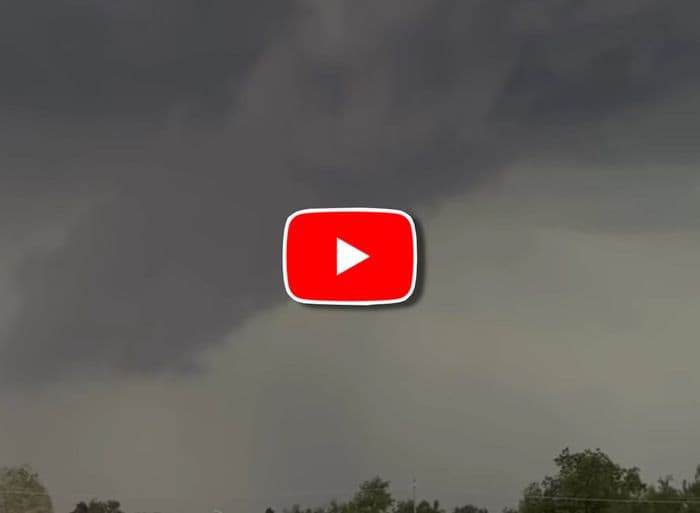Beneath the Orange Sky: Rio Grande do Sul's Blueprint for Future Storms
Explore Rio Grande do Sul's struggle with extreme weather. Uncover strategies for resilience, community preparedness, and vital lessons for future climate challenges.
The Immediate Unrest: Anatomy of an Orange Alert
When an 'alerta laranja' descends upon , it's more than just a weather forecast; it's a call to immediate vigilance. This particular Sunday, November 3rd, dawned under a sky heavy with the promise of intense instability. The confluence of a cold front, a low-pressure system, and a surge of heat and humidity from the north created the perfect storm, literally. Forecasters like and the issued dire warnings: heavy rainfall, powerful wind gusts, and the ominous possibility of hail across vast swathes of the state. , the capital, braced for a day of persistent, varying intensity rain and a noticeable drop in temperature. Even before Sunday truly began, the preceding Saturday had already offered a grim preview. At least eight municipalities, stretching from the rural expanses of where hailstones battered roofs, to and where strong winds ripped through homes, reported significant damage. This orange alert, signaling a potential danger, wasn't just a prediction; it was a rapidly unfolding reality, demanding swift action from communities and emergency services alike.
Echoes of the Past: A Pattern of Vulnerability
For the residents of , the 'alerta laranja' often carries a familiar, unsettling echo. This weekend's intense instabilities, with their accompanying downpours, winds, and hail, are not isolated incidents but rather the latest chapter in a recurring narrative of meteorological vulnerability. The sheer number of municipalities reporting damage—14 by Sunday morning, building on the eight from Saturday—underscores a widespread, systemic challenge. It highlights how various regions, from the to the western, central, and valley areas, are consistently susceptible to severe weather events. This isn't just about a single cold front; it's about the broader climatic patterns that make the state a frequent recipient of such powerful storms. Each event, while unique in its immediate impact, reinforces a collective memory of past losses and disruptions. This persistent pattern compels us to look beyond the immediate crisis, urging a deeper understanding of the underlying factors that make these communities so susceptible to the wrath of nature, setting the stage for more enduring solutions.
From Damage to Design: Strategies for Resilience
Moving beyond the cycle of immediate response, is increasingly focusing on proactive strategies to build long-term resilience against these recurring tempestades. The very existence of initiatives like the 'Clima Campo' e-book for rural producers is a testament to this shift. This practical guide empowers farmers to anticipate weather changes, plan their actions, and protect their livelihoods based on reliable meteorological forecasts. It's a prime example of turning data into actionable design, helping communities adapt before disaster strikes. Furthermore, the detailed risk maps, highlighting areas like the and western regions in red for their high potential for severe storms, are crucial tools. They inform targeted infrastructure improvements, better urban planning, and the development of early warning systems that go beyond a simple alert. By understanding where and how damage occurs—from destelhamed roofs in to fallen trees in —engineers and policymakers can design more robust structures and develop smarter land-use policies. This forward-thinking approach, where lessons from past damage inform future design, is the bedrock of true climate adaptation.

The Human Spirit Endures: Stories from the Front Lines
Amidst the chaos of an orange alert and the tangible wreckage it leaves behind, the enduring spirit of the people on the front lines truly shines. While official reports detail damaged roofs in or unroofed homes in , these statistics represent families, their lives abruptly upended. Imagine the farmer in , surveying a hailstorm-battered roof, wondering how to protect their family and their harvest, then seeing neighbors arrive with tarps and helping hands. Or the residents of , clearing fallen trees from their yards, unified by a common struggle and shared determination. The photos of damage in and , though stark, also implicitly tell a story of communities rallying, emergency services working tirelessly, and individuals offering what they can. These aren't just isolated incidents of destruction; they are moments that forge stronger bonds, where neighbors become saviors and local authorities become beacons of hope. It's in these trying times that the true resilience of the human spirit, the spontaneous acts of solidarity, and the quiet heroism of everyday people come to the forefront, proving that even under an orange sky, hope persists.
A Shared Horizon: Envisioning a Climate-Ready Future
Looking ahead, 's journey towards a climate-ready future is a shared endeavor, extending far beyond the immediate aftermath of any single storm. It involves a continuous dialogue and collaboration among government bodies, scientific institutions, local communities, and individual citizens. The detailed meteorological forecasts and alerts are not just for crisis management; they are foundational elements for long-term planning, enabling better infrastructure development, smarter agricultural practices, and more effective public awareness campaigns. Imagine a future where every home is built with resilience in mind, where urban planning actively incorporates flood mitigation and wind resistance, and where farmers are equipped with advanced tools to adapt their crops to changing weather patterns. This isn't a utopian vision but a practical necessity. By embracing a holistic strategy that combines robust early warning systems, adaptive infrastructure, and empowered communities, can transform its vulnerability into a blueprint for sustainable living. The goal is to move beyond merely reacting to an 'alerta laranja' to proactively shaping a future where its people and economy can thrive, come what may.
Related Articles

Living on Alert: Navigating Central NC's Dynamic Weather Reality

Living on Alert: Navigating Central NC's Dynamic Weather Reality

Verona's Unseasonal Fury: Unpacking the Supercell's Scar and Climate's Shadow

Verona's Unseasonal Fury: Unpacking the Supercell's Scar and Climate's Shadow

Unpacking the Orange: Life Under France's Summer Storm Alerts

Unpacking the Orange: Life Under France's Summer Storm Alerts

Weather's New Imperative: How Forecasting Became Our Blueprint for Resilience
